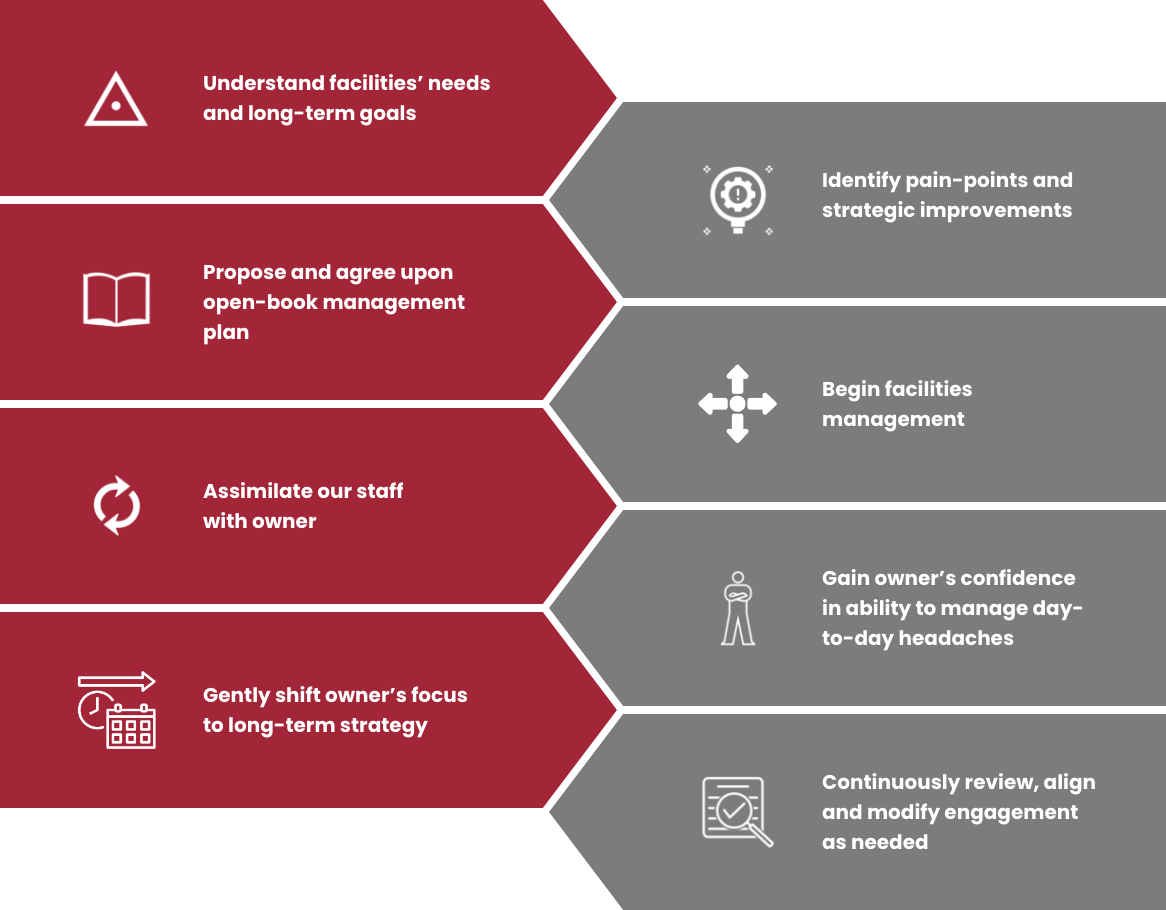Trick Fads Shaping the Future of Center Monitoring in 2024
As we look ahead to 2024, the landscape of center monitoring is poised for significant transformation, driven by a number of key patterns. The combination of clever building modern technologies and a shift in the direction of data-driven decision-making pledge to enhance operational effectiveness while focusing on sustainability in practice.
Smart Structure Technologies
Smart structure technologies incorporate a large array of systems, including intelligent illumination, HVAC controls, and safety systems. By integrating these systems, facility supervisors can check and readjust specifications in real-time, causing significant reductions in energy waste and operational expenses. For example, clever sensing units can detect occupancy degrees and adjust lights and temperature accordingly, making sure that energy is just used when necessary.
In addition, these technologies help with enhanced data collection, allowing companies to track use patterns and determine opportunities for more improvements. The application of clever structure innovations not only adds to sustainability goals however also produces much healthier workplace that can boost employee efficiency and fulfillment.
As we move right into 2024, the adoption of wise structure innovations will likely speed up, showing a more comprehensive shift towards more smart, receptive, and sustainable center monitoring practices.
Data-Driven Decision Making
Increasingly, organizations are leveraging data-driven decision making to improve center management practices. By taking advantage of information analytics, center managers can acquire actionable understandings that substantially boost functional effectiveness and resource allocation. The combination of advanced modern technologies, such as IoT sensing units and real-time surveillance systems, allows the collection of vast quantities of data on structure performance, occupancy rates, and energy usage.
This wide range of info permits facility supervisors to determine fads, forecast upkeep demands, and proactively address issues before they escalate. Predictive analytics can forecast equipment failures, reducing downtime and fixing expenses. Furthermore, data visualization devices assist in far better interaction amongst stakeholders, guaranteeing that educated decisions are made collaboratively.
Furthermore, data-driven approaches enhance tactical preparation by allowing facility managers to evaluate the performance of current techniques and make informed choices relating to investments in technology or framework. As organizations increasingly prioritize operational quality, data-driven choice production is positioned to end up being a cornerstone of effective center administration techniques in 2024 and past. Ultimately, the capability to take advantage of data efficiently will empower companies to produce extra efficient, efficient, and resilient facilities.
Sustainability and Environment-friendly Practices
The emphasis on data-driven decision making naturally straightens with the growing focus on sustainability and green practices within facility monitoring. As companies increasingly focus on ecological obligation, center managers are leveraging analytics to enhance resource use, lower waste, and decrease carbon impacts. This strategic approach makes it possible for the integration of energy-efficient systems, such as LED lights, smart a/c controls, and renewable resource sources into center procedures.
Furthermore, the execution of sustainable practices extends beyond power intake. Facility supervisors are advertising and embracing environment-friendly materials reusing initiatives to develop a round economic situation within their facilities. This not only boosts the environmental account of the organization but additionally cultivates a society of sustainability among staff members.
Conformity with ecological guidelines is an additional critical facet driving the fostering of environment-friendly techniques. By utilizing data analytics, center managers can keep track of conformity metrics and recognize areas for renovation, making sure adherence to global and neighborhood sustainability requirements.
Hybrid Work Designs
A considerable shift towards crossbreed work versions is improving the landscape of facility management in 2024. This paradigm incorporates in-office and remote job, demanding a reevaluation of space use, resource allowance, and staff member involvement strategies. Organizations are increasingly acknowledging the importance of versatile offices that accommodate varied needs and choices.
Center supervisors should adjust by carrying out functional workplace layouts that support collective efforts while supplying areas for focused work. This consists of the combination of innovation to assist in seamless interaction and cooperation amongst remote and in-office employees. Smart structure remedies, furnished with sensors and analytics, permit real-time surveillance of space use, enabling organizations to optimize their atmospheres effectively.
In addition, hybrid job designs stress the need for effective facility management that prioritizes staff member experience. In significance, the crossbreed work version is reinventing center monitoring, urging a proactive method to meet the developing demands of the workforce.
Enhanced Resident Health
As companies welcome hybrid work designs, an increased concentrate on resident wellness is coming to be important to facility management techniques. Facility Management. This change recognizes that a pleased and healthy and balanced workforce directly influences performance and retention rates. Facility supervisors are currently focusing on environments that advertise mental and physical health, incorporating aspects such as natural lights, biophilic design, and accessible wellness sources

Modern technology plays a crucial role in this advancement. Smart structure systems can check environmental variables and readjust setups in real-time, making sure optimum comfort degrees - Facility Management. Feedback systems, such as occupancy sensors and worker studies, permit center supervisors to consistently improve wellness initiatives based on resident requirements.

Verdict
In 2024, the future of center management will be significantly affected by the assimilation of wise useful source structure modern technologies and data-driven decision-making, fostering boosted operational effectiveness. Sustainability efforts will focus on environment-friendly practices, while the emergence of crossbreed work versions will certainly demand adaptable workplace designs. Additionally, an increased concentrate on passenger health with advanced cooling and heating systems and biophilic layout will certainly add to much healthier work settings. These fads collectively highlight the advancing landscape of center management in action to modern obstacles and chances.
Facility supervisors are promoting and embracing environment-friendly materials reusing efforts to create a round economic situation within their facilities.A significant shift in the direction of hybrid work versions is improving the landscape of facility management in 2024.Furthermore, hybrid job models stress the demand for effective facility administration that focuses on employee experience.As companies embrace hybrid job designs, a heightened focus on owner health is becoming important to center monitoring techniques.In 2024, the future of center monitoring will certainly be significantly influenced by the combination of wise building technologies and you could try this out data-driven decision-making, promoting enhanced operational efficiency.